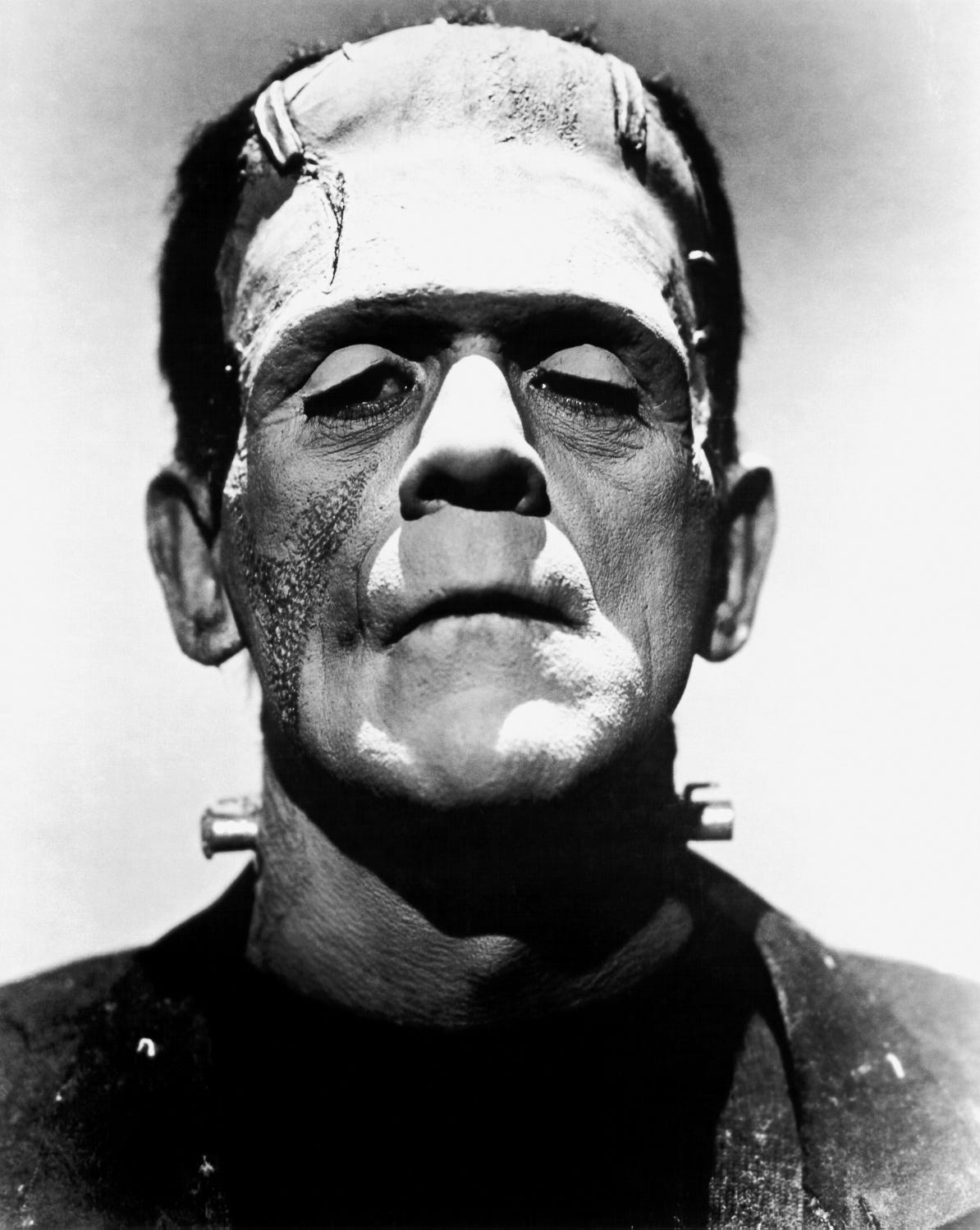The other day I couldn’t stop myself jumping onto a social media thread about the latest touted marvel/apocalyptic threat - AI art.
‘Frankenart!’ I snorted. ‘Wouldn’t touch it with a bargepole.’
For most of my life, Frankenstein was the poorly-patched-together lumbering aberration created by a mad scientist, not the mad scientist himself.
But in Mary Shelley’s original 1818 novel, the guy who created the monster was Baron Victor Frankenstein, renamed Henry (why?) in the iconic 1931 movie.
Apparently it’s not just me being clueless. As this movie blogger explains (she should know - she’s the niece of Universal Studios founder Carl Laemmle) it’s fine to call the monster Frankenstein. Most people do. Especially as the creature is never given a name of its own.
Whatever, Frankenstein as a scientist-created monster is so firmly ensconced in the popular imagination that if you add ‘franken-’ to a word, everyone instantly gets what it means.
And it’s not nice.
In fact the only nice thing about frankenwords is how easily and effortlessly you can create them.
You split a word – in this case an iconic proper name – into its constituent parts (as in franken-stein, wein-stein, gold-stein), take one of the parts and tack it onto another word to form a new compound.
We call these word pieces combining forms. And a combining form packs a huge amount of meaning into a few syllables.

Franken, with its sinister implications, is the perfect choice for the deeply pejorative naming of genetically-modified organisms (GMOs) - the fruits of frankenscience (pun intended). Now, thanks to hardworking frankenfoodologists, we can enjoy a vast smorgasbord of frankenfoods: frankenbananas, frankenapples (from franken appletrees), frankencorn, frankensoy, frankenrice.
Or Golden Rice, as it was alluringly called by its peddlers. This was an attempt to engineer a variety of rice that would biosynthesize beta-carotene (the substance that gives fruits and veggies a golden colour and is used by your body to make Vitamin A). You can read the story of Golden Rice here. (BTW, if you’re looking for a cool screenplay idea, this has everything. Spoiler: the People win!)
Anyway, I went down the rabbit hole again, googled frankenanimals and discovered a ‘tinker camp’ for teens in Portland, Oregon this coming October. At Frankenanimals for Teens, attendees can create their ‘very own Franken-animal or creature by taking apart stuffed animals and then mashing them back together with found materials, LED lights and batteries, and even salvaged animatronics using needle, thread, and hot glue. Maybe creepy, maybe gorgeous, you’ll come away with an epic companion of your own design.’
Ouch.
As a lunatic who feels compelled to rescue soft toys from charity (thrift) shops even though I am servant to two real flesh-and-blood (and claws) cats, I was appalled. Cutting and splicing what my family generically call ‘teddies’ (we still keep all ours) is beyond abhorrent. I hope this is not a training for the real thing (I do acknowledge, however, that the other workshops on offer look quite fun and creative).
There’s some straight-up information on frankenanimals here, where they tell us that gene splicing can be done between totally unrelated species. Which reminds me of the idea that the chimeras, mermaids, centaurs and other hybrid creatures of myth and legend were the (botched) results of experiments carried out by ancient geneticists, who may also have engineered us humans or modified our genome in some way. (I know this is a rabbit hole that many prefer not to even acknowledge, but I’m going to leave it here for the intrigued.)
But don’t get me started on the (in)famous frankenmosquitoes unleashed in Djibouti, Brazil, and other places.
And now, frankenmeat - lab-grown meat - takes us to a whole new level of insanity.
But when I googled ‘franken microbes’ I didn’t expect to find this vernacular usage in an abstruse science paper:
‘Frankenbacteriosis targeting interactions between pathogen and symbiont to control infection in the tick vector.’
‘Frankenbacteriosis’ is inspired by Frankenstein, explain the authors, and defined here as ‘paratransgenesis of tick symbiotic/commensal bacteria to mimic and compete with tick-borne pathogens.’
Right?
And then I found this:
The trailer is here and the whole documentary here
The lesson of Mary Shelley’s original horror story and its screen version is also deeply rooted in our collective consciousness: don’t mess with nature. We really have no idea of the consequences of genetic engineering, weather modification and whatever else they cook up.
‘Franken’ tells us all this and more. In only two syllables.
I’d love to hear any frankenwords you’ve come across. Pop them in the comments.
Thanks for reading The Reenchantment Café! Subscribe for free to receive new posts.






Wowzers! Lots to think about here. Your grasp of the English language really is incredible. Thanks for sharing 🌟